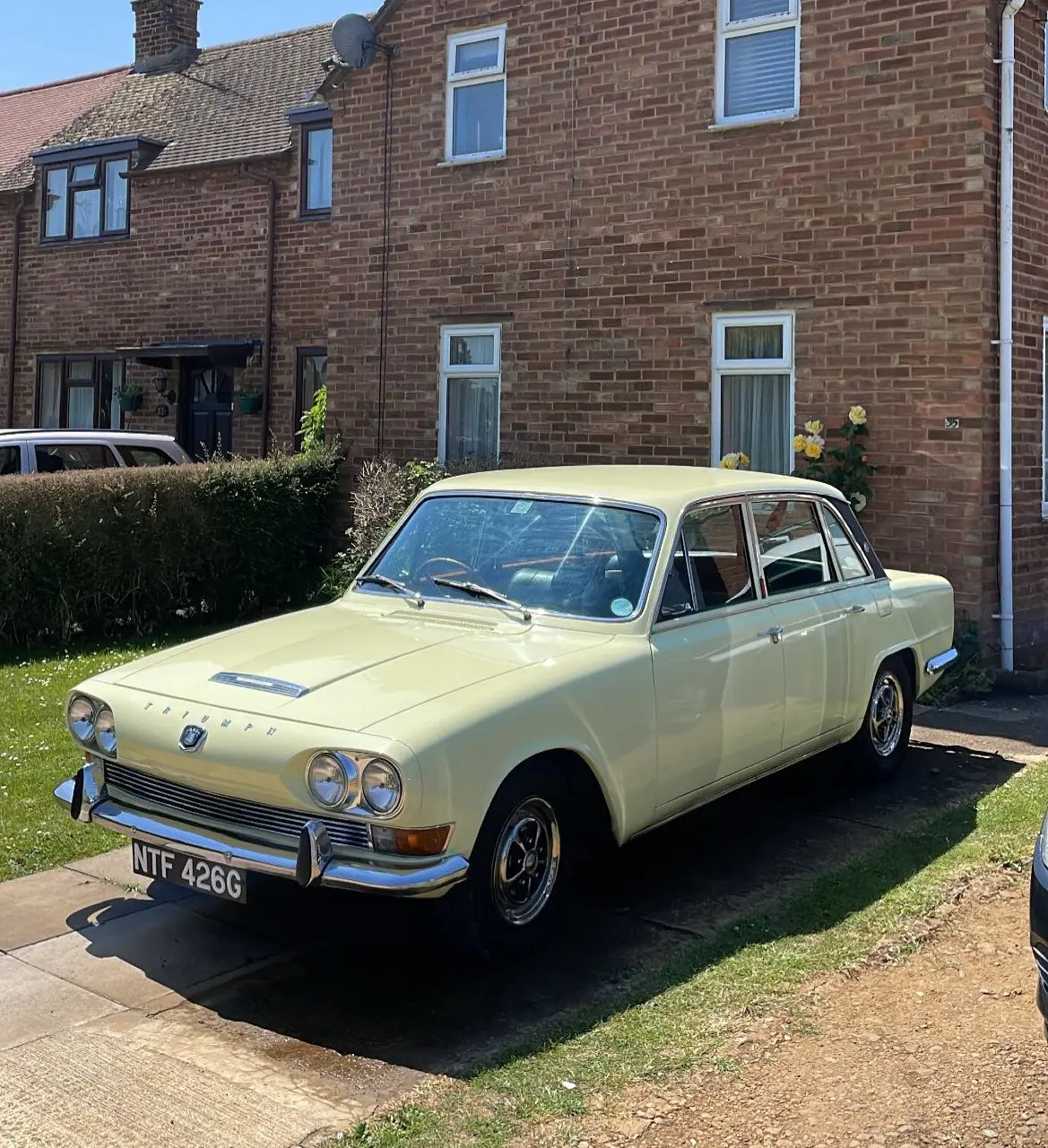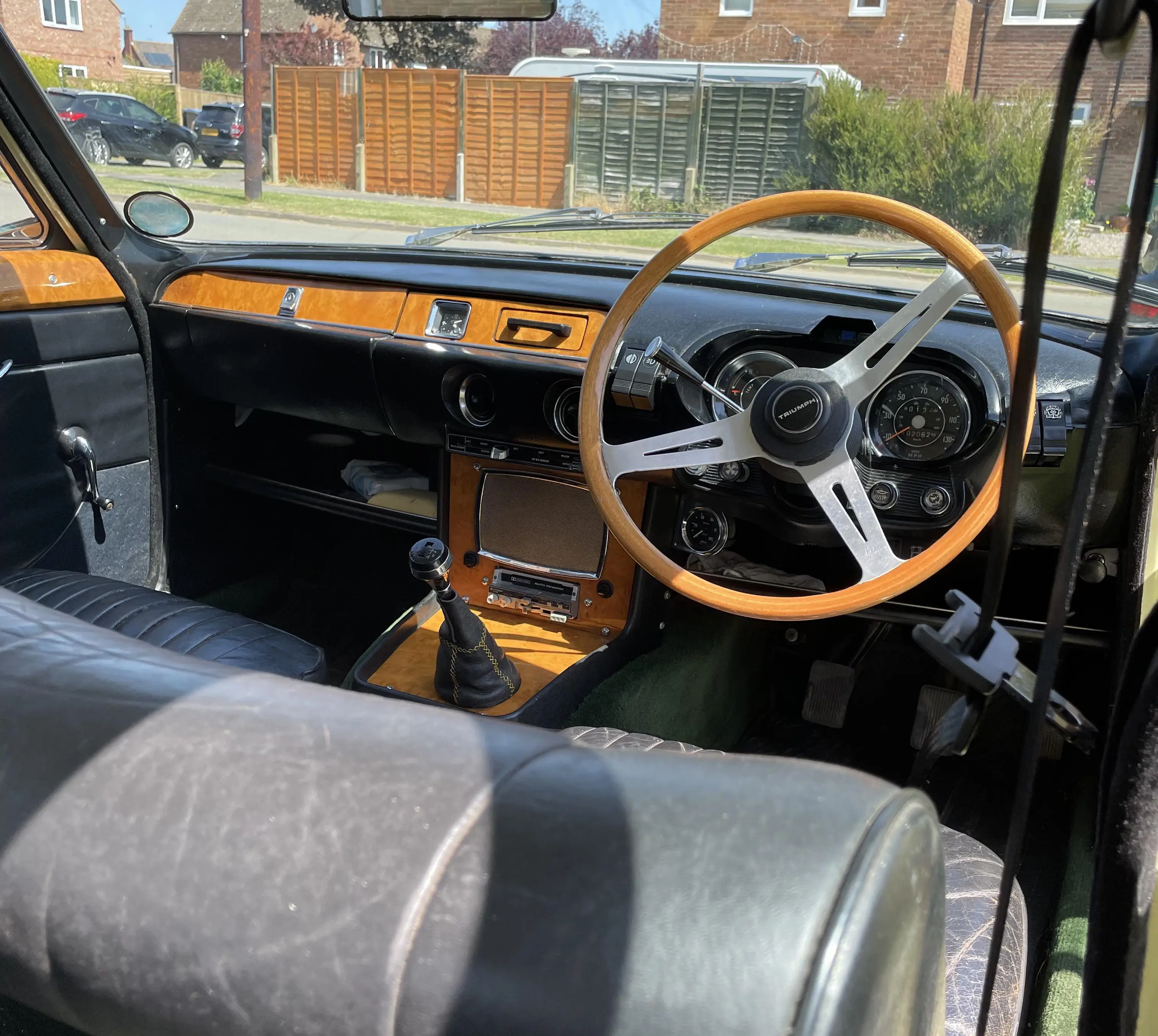Meet The Owner – Kieron Trumper and his Triumph 2.5 PI Mk. 1
04 March 2024
I bought the car last April when I was 20. I always knew I wanted a Triumph 2000/2500 as my dad had them 20/30 years ago and still owned one when I was a little kid, and it is my earliest memory of cars.
To be the custodian of the UK’s only fuel-injected saloon is a distinction for any classic enthusiast – especially when you are aged 21. Kieron’s father is the proud owner of 1964 2000, so it seemed almost inevitable that his son would acquire the groundbreaking 2.5 PI one day.

In the 1960s, Triumph considered a variety of plans for a more powerful version of 2000. Rejected ideas included enhancing the engine to create the “2000TS” and using the OHC V8 plant from the forthcoming Stag. Instead, management at Canley decided both their flagship saloon and the latest TR would be available in fuel-injected forms.
Triumph expanded the 1,998cc engine to 2,498cc to accommodate the Lucas fuel injection and increase low-speed torque. The TR5 debuted in October 1967, followed a year later by the 2.5 PI.
Meanwhile, advertisements invited prospective buyers to “Join the Power Elite”.
The 2.5 PI cost £1,481 9s 9d, which was a reasonable sum for a saloon capable of around 110 mph and that “Merely whispers at high speeds”. Even when specified with optional overdrive for £65 5s 7d or Borg-Warner automatic transmission for £101 16s 8d, the Triumph was still cheaper than £1,941 for the BMW 2000Ti or £2,110 for the fuel-injected Lancia Flavia Berlina.
The nearest British rival to the Triumph was the Rover 2000 for £1,568, but the P6 was an urbane four-cylinder four-seater, while the Triumph was a six-cylinder five-seater. The 2.5 also revelled in its black C-pillars and leather-trimmed steering wheel. There were even “Magnum style wheels” that were actually elaborately decorated hubcaps.
As for the press reaction, Car staged a twin test with the 2000TC and found the 2.5 PI the “faster and the more effortless performer” of the two with “the more exciting handling, conventionally speaking”. They concluded “a clear-cut decision is impossible”. Meanwhile, Autocar raved:
There is no doubt this car has been designed for the enthusiast. It is the kind of car over which one is bound to get enthusiastic, and we are extremely pleased that it is made by a British manufacturer and has turned out so well in so many ways. It is very satisfying to drive and to live with, the kind you hate to park because it means you have to switch off and leave it.

In 1969, Triumph introduced a 2.5 PI Estate, and by the end of the year, the facelifted Mk.2 replaced the original family. Today, Kieron finds his Triumph “lovely to drive, very comfortable and quite quick for its age as the 2.5 PI engine is a slightly de-tuned TR5/6 engine, so it can get up and go when it wants to”.
And such a performance should come as no surprise. After all, the 2.5 PI represented “A tremendous new move in the power game” back in 1968.
With Thanks To: Kieron Trumper
